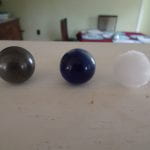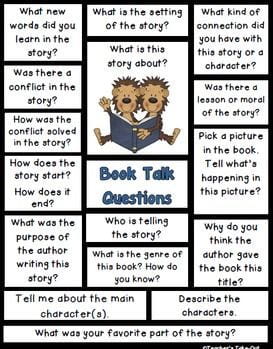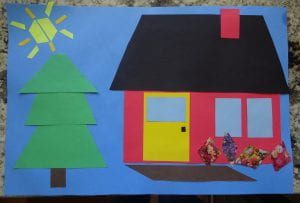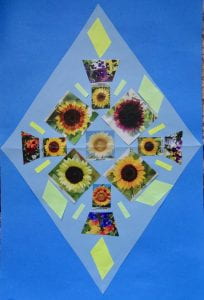 Good Morning!
Good Morning!
Morning Work – Start your learning day by picking up your gratitude rock and thinking of something new to add to your Gratitude Jar. Take a moment to count your blessings and feel happy.
Take some time to read each others blogs and leave a comment or two. Your comments are virtual pats on the back. They help us keep going. 🙌🏼👏🏽👊🏻🤟🏽 Thanks for staying connected.
 Morning Meeting– Today we’ll read Miss Moore Thought Otherwise . Think about how having courage question help Miss Moore change rules and attitudes. We can help each other change the world too by offering support to others. Choose another sentence stem from Dan Rockwell:
Morning Meeting– Today we’ll read Miss Moore Thought Otherwise . Think about how having courage question help Miss Moore change rules and attitudes. We can help each other change the world too by offering support to others. Choose another sentence stem from Dan Rockwell:
- Congratulations on…
- You’re making a difference for…
- I’m encouraged when you…
Use it to leave a compliment to Miss Moore in comment section. I know it may still seem odd to encourage a book character, but practice makes progress. Have you shown your appreciation to your family more often this week? I hope so. I hope your habit of encouraging each other will grow and grow.
Take a break, get a snack and move around. If you’d like, here are two Go Noodle videos: move to Hollaballoo and relax and reflect with Be Grateful. I am so grateful to know you!💗
Science and Reading
Shared Reading – Here’s a new poem to add to our understanding of force and motion.
Laws of Motion by Carolyn Colley
Sir Isaac Newton was his name
Observing objects was his game
He made three rules about what he saw
When we see motion, it’s described by his laws.
The first law of motion is just a piece of cake.
To make an object move, all it needs is a shake.
The second law of motion is about force.
Give it a shove and the objects takes that course.
The third law of motion is pure satisfaction.
For each force made there’s an equal and opposite reaction.
Pushing or pulling, exerting a force
Moving and shaking, it’s physics of course
Listen to Roller Coaster by Marla Frazee. Think about how force and motion, pushes and pulls, gravity and friction work together so that amusement park rides work safely.
Here’s an experiment to try Exploring Ramps, Angles and Friction
Supplies Needed:
 Materials to make a ramp; cardboard, wooden planks, a cutting board, a cookie sheet
Materials to make a ramp; cardboard, wooden planks, a cutting board, a cookie sheet- Books or blocks to hold the ramp in place
- A variety of things that roll; toy cars, balls – try for 3 of about the same size
- A variety of textured materials to create friction – there are many ideas. Choose what you have easily available – foil bubble wrap, a dish towel,
 sandpaper, a piece of foam. The goal is to have three different textures.
sandpaper, a piece of foam. The goal is to have three different textures. - Tape to hold things down if necessary
- Optional ~ stopwatch and measuring tape.
- Exploring Ramps, Angles and Friction Science Lab Report. (It is also in our Google Classroom if you find that easier.)
Procedure:
- Gather your supplies
- Create your ramp. It should be about 6 inches high.
- Make a finish line about 3 feet away from the end of your ramp.(I used a book so the balls would stop.)
 Complete the Hypothesis section on your science lab experiment. Explain what you think will happen and why with as much detail as possible.
Complete the Hypothesis section on your science lab experiment. Explain what you think will happen and why with as much detail as possible.- Conduct your experiment. (If you have a stopwatch, you could find out which is fastest. If you have a big space, don’t use a finish line and see which will go furtherest. Measure and compare with your measuring tape.)
- Complete the Results section on your Science Lab Experiment. Explain what happened with as much detail as possible.
- Write your conclusion.
If you could change one thing in your experiment, what would you change? How would raising or lowering the ramp change the results of the experiment? How would changing the surface of the ramp change it? What would you discover if you moved the finish line further away from the ramp? Decide on a change to make and give it a try. Record your results on the second part of the experiment. If you’re having fun keep going.
Share what you did on your blog or in an email. Have fun with forces, friction and gravity.
Take a break, go outside, run around, sing, play a game, make some art.
Independent Reading – Keep reading each and every day! Find a nice quiet place to read and enjoy at least 30 minutes with a great book. If you’re wishing for some new book/reading options you can find some fabulous picture book recordings at Storyline Online and recorded books here at Audible. The Elementary selections look great. Enjoy!
At the end of reading, choose two or three things from the Book Talk Questions grid when you leave a comment about what you read today on the blog.
Go outside, have some lunch, play a game, practice your recorder. Relax.
Writer’s Workshop – We’ve been working to write the mysteries you planned last week in Google Classroom. You don’t have to do all the writing at once. Take your time. Mystery Writing is tricky. 🙃 Remember to copy and paste each part into the beginning of each new assignment. That way your whole mystery will be together in one document as you go. The directions for how to do that are in each assignment. The new assignment today is 4. Writing a Mystery ~ creating an ending.
If you’re ready for a new writing idea, here are today’s Quick Writes:
- You win a cooking contest for your famous recipe for ____________ and…
- You discover your parents are spies and …
- You bring your take out meal home, but…
- You find $1,000 on the ground and you…
- Or any other topic you are inspired to write about.
Read the prompts, think for a minute or so, choose a topic and write for a full 10 minutes without stopping. At the end of 10 minutes you choose – are you done, do you have a different idea, do you want to keep going. It would be fun to see some of your writing on your blog this week.
Math Workshop – Only a few of you had the opportunity to complete the Quadrilateral Assignment yesterday. If you’re not one of those few, I hope today you’ll create the blog post listing at least 4 attributes that are shared by all squares, all parallelograms, and all trapezoids. This word bank can help. If you’re not sure what to do, look back at the April 28th post to see the example about rectangles.

The new assignment in your study of geometry is to create a picture or design that is clearly made from at least 12 different quadrilaterals. Your picture must include at least one unique square, rectangle, parallelogram, rhombus and trapezoid.
Submit a picture of your creation either through email, or by creating blog post by Tuesday, May 12.
Here are samples of how this assignment might be completed.


Next, here are today’s problems to choose from. See if there are two that feel like just right challenges. You can solve them in your journal or on a piece of paper. It would be most helpful to put the color and the date the problem was posted. Thanks!
Paul had three huge bins of Legos. One had 14,567 long bricks in it. Another had 21,934 medium bricks in it and the last had 20,385 small bricks in it.
How many Lego bricks did Paul have to build with altogether?
He used 22,987 of the bricks to build a house.
How many Lego bricks were left for other projects?
Landon went hiking. He kept track of the people he saw on the trail. When he was done and back at his car, he had counted 1,304 people in total.
348 people had red jackets, 75 people had white jackets, and 242 people had blue jackets.
The rest of the people he counted wore multi-colored jackets.
How many people with multi-colored jackets did Landon see and count?
Holden collected shells. He had 2,423 white shells, 2,056 yellow shells and 1,308 speckled shells.
He used 2,388 of his shells to decorate one box and 839 to decorate another.
How many shells did Holden use in these projects?
How many shells did Holden have left for other projects?
When Edward started building with Legos, he had 12,035 bricks in a bin.
When he was finished there were 2,368 bricks left.
Edward had used 7,206 for a ship. He used the rest for a robot.
How many Legos did Edward use building his robot?
Vera collected stuffies. She had 123 wild animals, 256 dogs and 16 unicorns.
How many stuffies did Vera have altogether?
Vera sorted through them and decided to give 138 of them to the SPCA so the dogs there could have toys.
How many stuffies did Vera have left then?
May made five necklaces.
Her pattern repeated yellow, blue, and gold six times on each necklace.
How many beads did May use on one necklace?
How many beads did May use to make all five of her necklaces?
If you’ve worked through that, it’s definitely time for a game here at ABCya. Find a way to keep practicing your math facts in all four operations.
UA’s for today…
Spanish ~ I know Señora Murphy has posted some new lessons for you to explore.
And here’s a new message to you and your family from Mrs. Oliver:
There is new information and videos on the Music website.
Thank you for another week full of your creativity, determination and awesomeness!
You and your effort fills me with appreciation and joy. You are amazing!🙌🏼
🌈🌎✏️📚💕Mrs. Eaves